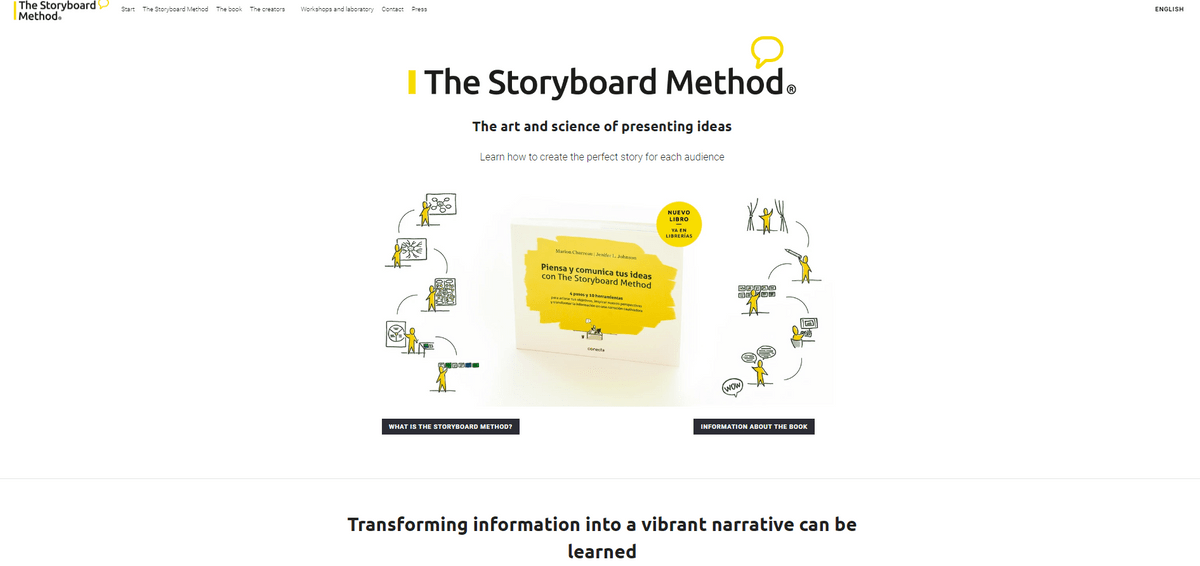Breaking Down The Power Of Content Silos For SEO Domination
Breaking Down The Power Of Content Silos For SEO Domination

Content silos are a powerful tool for organizing and optimizing website content. By grouping related content, businesses can enhance their SEO efforts and drive more organic traffic. Understanding the impact of content silos on SEO and leveraging them for success is crucial for any website looking to improve its search engine rankings.
Understanding the Power of Content Silos
Content silos are essentially a way of organizing website content into distinct categories or topics, making it easier for search engines to understand the relevance and hierarchy of different pages. This organization helps to establish clear pathways for users to navigate through the site, leading to improved user experience and, ultimately, better SEO performance.
Content silos are like the tidy little filing cabinets of the internet world, neatly organizing all your website's content into easily digestible categories. This makes it easier for search engines to find and rank your pages and helps users navigate your site like a well-marked hiking trail. If you want to climb to the top of the SEO mountain, building some solid content silos is a step in the right direction.
The Impact of Content Silos on SEO
When implemented effectively, content silos can have a significant impact on a website's SEO. By structuring content logically and hierarchically, businesses can enhance keyword targeting, internal linking, and overall site architecture - all crucial elements for improving search engine visibility.
Content silos are like the secret sauce of a well-optimized website - they help search engines understand the structure and relevance of your content. By organizing your website into distinct silos, you make it easier for search engines to crawl and index your pages, ultimately boosting your chances of ranking higher in search results. If you want to give your SEO efforts a little extra oomph, consider implementing content silos as part of your website strategy.
Leveraging Content Silos for SEO Success
Leveraging content silos involves creating a strategic framework that aligns with the business's goals and target audience's needs. By understanding how to build and optimize content silos, businesses can maximize their SEO potential and achieve greater online visibility.
Understanding the different types of content silos, such as topical and hierarchical, is crucial to organize and structure website content effectively. By categorizing and interlinking related content within these silos, businesses can improve user experience and increase engagement on their website. Ultimately, leveraging content silos can lead to higher conversion rates and a stronger connection with the target audience.
With an understanding of the power of content silos and their impact on SEO, it's essential to delve deeper into what exactly they are and how they can be utilized effectively to drive organic traffic and improve search rankings.
What are Content Silos?
Image taken from Wonderous
Content silos are a robust organizational structure for websites where related content is grouped hierarchically. This helps search engines understand the context and relevance of the content, leading to improved SEO performance. By categorizing content into distinct silos, websites can enhance user experience and drive more organic traffic.
Defining Content Silos
A content silo is a method of organizing website content into different categories or themes, with each category containing related subtopics. This creates a clear and logical structure for users and search engines to navigate the website. Content silos can be made using categories, tags, or custom taxonomies to group related content together.
Content silo examples are a great way to improve the user experience on a website, making it easier for visitors to find the information they're looking for. By organizing content into clear categories and subtopics, you can also help search engines understand the structure of your site, potentially boosting your SEO efforts. Plus, it looks immaculate and tidy – like Marie Kondo came in and organized your website for you.
Benefits of Using Content Silos
1. Organized Content Structure
One of the primary benefits of using content silos is the creation of an organized content structure on your website. An effective example of a content silo involves hierarchically grouping related information or topics, making it easier for both users and search engines to navigate and understand the thematic relevance of your content. By structuring your website this way, you create a clear and logical path for visitors to follow, improving the overall user experience and ensuring that each piece of content fits within a well-defined context.
2. Enhanced SEO Performance
Content silo examples contribute significantly to search engine optimization (SEO) efforts. Search engines prefer well-organized and thematically grouped content, and content silos align with this preference. When you create content silos, you establish a topical hierarchy that allows search engines to understand the relationships between different pieces of content on your website. This, in turn, can lead to improved search engine rankings and visibility. For example, a website about fitness could have a content silo for "Strength Training," with subtopics like "Weightlifting Techniques" and "Effective Workout Routines," signaling to search engines the coherence and relevance of the content.
3. Targeted Keyword Optimization
Content silos provide an effective strategy for targeted keyword optimization. When building a content silo, each silo can be centered around a specific set of keywords or a core topic. By focusing on related keywords within a silo, you enhance the overall keyword relevance of the content within that silo. This targeted approach to keyword optimization can lead to higher rankings for specific topics or themes, attracting more qualified organic traffic to your website. For instance, a blog focusing on digital marketing might have an example of a content silo dedicated to "Social Media Strategies" with subtopics like "Instagram Marketing" and "Facebook Advertising."
4. Improved User Engagement
Building a content silo contributes to improved user engagement by providing visitors with a logical and coherent flow of information. Users can navigate through related content seamlessly within a specific silo, finding comprehensive information on a particular subject. This organization reduces the likelihood of users bouncing away from your site for more relevant information. For instance, a travel website might have an example of a content silo for "Destination Guides," containing subtopics like "Best Restaurants," "Local Attractions," and "Travel Tips," ensuring that users find all the necessary information within the same thematic context.
5. Facilitates Internal Linking
Content silos facilitate strategic internal linking, another crucial aspect of SEO. When you create content silos, you naturally link related pieces of content within the same silo, reinforcing the topical relevance and hierarchy. This internal linking structure helps distribute authority and page rank throughout your website, benefiting user navigation and search engine crawlers. By incorporating links between content in a structured manner, you ensure that users discover additional valuable information within the same context, promoting longer stays on your site and a more comprehensive exploration of your content offerings.
Importance of Organizing Content
1. Enhanced User Experience
Organizing content is crucial for providing an enhanced user experience on your website. Content silos, for example, play a key role in structuring information in a logical and easily navigable manner. By grouping related content within a silo, users can seamlessly navigate through topics of interest. For instance, a website about technology might have a content silo dedicated to "Mobile Devices," containing subtopics like "Smartphones" and "Tablets." This organization ensures that users cohesively find relevant information, reducing frustration and increasing overall satisfaction with the website's usability.
2. Improved SEO and Search Visibility
Organizing content is vital for SEO, contributing to better search engine visibility and rankings. Search engines favor well-organized websites that present content in a structured and thematic manner. Content silos, when implemented effectively, help search engines understand the contextual relevance of different pieces of content. For instance, a travel blog might use content silos to organize information about "European Destinations," with subtopics like "Historical Sites" and "Culinary Experiences." This organization aids search engines in indexing and ranking content appropriately, leading to improved search visibility for specific keywords and topics.
3. Targeted Keyword Optimization
The importance of organizing content becomes evident in targeted keyword optimization. Content silos provide a strategic approach to focusing on specific keywords or themes within a particular topic. For example, a fashion website might have a content silo for "Seasonal Trends," including subtopics like "Spring Fashion" and "Winter Wardrobe Essentials." This allows the website to target relevant keywords, attracting a more specific audience interested in those topics. By aligning content with targeted keywords, you increase the likelihood of ranking higher in search results and attracting qualified traffic.
4. Efficient Internal Linking
Organizing content facilitates efficient internal linking, crucial for user navigation and SEO. The best content silo examples inherently encourage linking related pieces of content within the same thematic context. For instance, a health and wellness website might have an example of a content silo for "Fitness Tips," containing subtopics like "Cardio Workouts" and "Strength Training." This structured approach to internal linking not only aids user navigation but also distributes link equity throughout the website, contributing to improved SEO performance and page authority.
5. Consistent Brand Messaging
Organizing content silo examples is essential for maintaining consistent brand messaging across your website. Whether you are a business, blog, or online platform, presenting content in a structured manner helps convey a cohesive brand identity. Content silos, for example, allow you to showcase different facets of your brand within dedicated topics. An e-commerce site specializing in "Outdoor Gear" might organize content with a silo for "Adventure Travel Essentials," featuring subtopics like "Backpacking Gear" and "Camping Essentials." This consistency in presentation reinforces your brand image and messaging, making it more memorable and impactful for your audience.
Maximizing SEO with Content Silos
Image taken from Playfight
When it comes to maximizing SEO with content silos, several strategies can be employed to ensure success. One effective strategy is to interlink related content within the same silo, creating a web of interconnected information that search engines can easily crawl and index. Doing so lets you establish topical authority and relevance, which are crucial for ranking well in search engine results pages (SERPs). Additionally, optimizing the internal linking structure within your content silo examples can help distribute link equity throughout your website, boosting the authority of all pages within the silo.
1. SEO Strategies for Content Silos
One of the most important SEO strategies for content silos is to ensure that each silo focuses on a specific topic or keyword theme. This allows you to create comprehensive and in-depth content around a particular subject, signaling that your website is an authoritative source to search engines. Additionally, leveraging internal linking and anchor text optimization within your content silos can help reinforce the topical relevance of your pages and improve their visibility in search results.
2. Integrating Keywords in Content Silos
Integrating keywords strategically within your content silos is essential for improving their SEO performance. By conducting thorough keyword research and identifying relevant terms and phrases related to your content silo topics, you can optimize your on-page content to target those keywords effectively. Incorporating keywords into headings, subheadings, meta tags, and image alt attributes within your content silo examples can signal to search engines what each page is about, increasing the likelihood of ranking for those terms.
3. Driving Organic Traffic with Content Silos
Content silos play a crucial role in driving organic traffic to your website by providing a structured approach to organizing and presenting valuable information to both users and search engines. By creating high-quality, informative, and engaging content within your silos that addresses user intent and fulfills their informational needs, you can attract organic traffic from relevant search queries. Moreover, as search engines recognize the topical relevance and authority of your content silo examples through proper optimization and interlinking strategies, they are more likely to rank them higher in SERPs.
How to Create Content Silos
Image taken from Inspire Organics
1. Define Your Website's Core Themes
To create content silos, start by defining the core themes or main topics that align with your website's purpose and audience interests. Identify overarching categories that encapsulate the primary focus areas of your content. For instance, if your website is about digital marketing, core themes could include "Social Media Strategies," "Search Engine Optimization (SEO)," and "Content Marketing."
2. Break Down Core Themes into Subtopics
Once you've identified core themes, break them into more specific subtopics. These subtopics will become the individual content silos. Continuing with the digital marketing example, if "Social Media Strategies" is a core theme, subtopics could include "Instagram Marketing," "Facebook Advertising," and "Twitter Campaigns."
3. Create Pillar Content for Each Silo
Develop comprehensive pillar content for each content silo. This content should serve as the main piece within the silo, covering a broad overview of the subtopic. For example, in the "SEO" silo, create pillar content such as "The Ultimate Guide to Search Engine Optimization," offering in-depth insights and key concepts related to SEO.
4. Generate Supporting Content for Subtopics
Generate supporting content that delves deeper into specific aspects of each subtopic within the content silo. These supporting pieces should provide more detailed information or address specific elements related to the subtopic. In the "Instagram Marketing" silo, supporting content could include articles like "Optimizing Visual Content for Instagram" or "Crafting Engaging Captions."
5. Implement Strategic Internal Linking
Implement strategic internal linking between the pillar content and supporting subtopic content within each content silo. Create a logical flow between articles, guiding users through a seamless journey of related information. For instance, within the "Content Marketing" silo, internally link the pillar content on "Content Strategy" to supporting subtopic content like "Effective Blog Writing Techniques."
6. Optimize for SEO
Optimize each piece of content within the content silo for search engines. Incorporate relevant keywords, meta tags, and descriptive headers. Ensure that on-page SEO elements are effectively utilized to enhance the discoverability and ranking of your content. In the "Facebook Advertising" silo, optimize articles with keywords like "Facebook Ad Campaigns" or "Targeting Strategies."
7. Maintain Consistent Theming and Branding
Maintain a consistent visual theme and branding elements within each example of a content silo to provide a unified user experience. Use a cohesive design that aligns with your brand identity, including color schemes and typography. For example, in the "Twitter Campaigns" silo, maintain visual consistency with Twitter-themed imagery and a coherent color palette.
8. Regularly Update and Expand Content
Regularly update and expand the content within each content silo to ensure its relevance and comprehensiveness. Introduce new articles, updates, or additional subtopics to keep the silos dynamic and engaging. In the "Social Media Strategies" silo, periodic updates could include articles on emerging trends or case studies showcasing successful social media campaigns.
Jumpstart Your Website Building Journey With Us!
Image taken from The Storyboard Method
Are you ready to take your website to the next level? Unlock the SEO potential of your content with strategic content silos. By implementing content silos, you can dominate search engine rankings and drive organic traffic to your site. Let's explore how you can elevate your SEO strategy with content silos.
Unlocking Your Content Silos Potential With Our Websites
1. User-Friendly Platform for Building Content Silos
Strikingly provides a user-friendly platform that simplifies the process of building a content silo for your website. With its intuitive drag-and-drop interface and customizable templates, you can easily organize your content into silos without the need for extensive coding or design skills. This makes Strikingly an ideal choice for both beginners and experienced users looking to create a structured and visually appealing website with distinct content silos.
2. Responsive Design for Seamless User Experience
Strikingly ensures a responsive design for your website, optimizing it for various devices and screen sizes. This is essential for a seamless user experience when navigating through different content silo examples. Whether users access your site on a desktop, tablet, or mobile device, Strikingly's responsive design ensures that your content is displayed consistently and intuitively within each silo, enhancing accessibility and user engagement.
3. Effortless Internal Linking Features
Building a content silo requires efficient internal linking, and Strikingly offers effortless features to facilitate this. With Strikingly, you can easily create navigation menus, links, and buttons that guide users through the hierarchical structure of your content silos. This ensures a smooth internal linking strategy, allowing users to explore related topics within a silo and enhancing the overall coherence of your website.
4. Customizable Themes Aligned with Branding
Strikingly provides a range of customizable themes that allow you to align your website's visual presentation with your branding. Consistent theming is crucial when building content silos, as it helps users identify distinct silos and maintain a cohesive experience. Strikingly's customizable themes enable you to choose color schemes, fonts, and layout options that reflect your brand identity and enhance the visual appeal of each content silo.
5. Integrated Blogging Features for Dynamic Content
Strikingly offers integrated blogging features that support the dynamic expansion and regular updating of content within your silos. Whether you're adding new articles to your pillar content or creating supporting subtopic content, Strikingly's blogging tools allow you to integrate further information into each silo seamlessly. This dynamic approach ensures that your content remains fresh and relevant, contributing to the overall success of your content silo examples.
6. SEO-Friendly Elements for Improved Visibility
Strikingly is equipped with SEO-friendly elements that enhance the visibility of your content silos on search engines. From customizable meta tags to clean and optimized code Strikingly prioritizes SEO best practices. This is crucial for ensuring that your content silos rank well on search engine results pages, attracting organic traffic and increasing the discoverability of your themed content.
7. Efficient Content Management System (CMS)
Strikingly offers an efficient Content Management System (CMS) that simplifies the organization and management of your content silos. With a straightforward dashboard, you can easily add, edit, or remove content within each silo. This streamlines the content creation and updating process, allowing you to focus on maintaining a structured and engaging user experience within your content silos.
8. Taking Your SEO Strategy to the Next Level with Content Silos
How can you implement content silos for maximum impact? Start by building a strategic content silo that organizes your website's pages into relevant categories and subcategories. Use targeted keywords within each silo to further optimize for search engines. Measure the success of your efforts by tracking improvements in organic traffic and search engine rankings.
Curious for more? Chat with us today!




